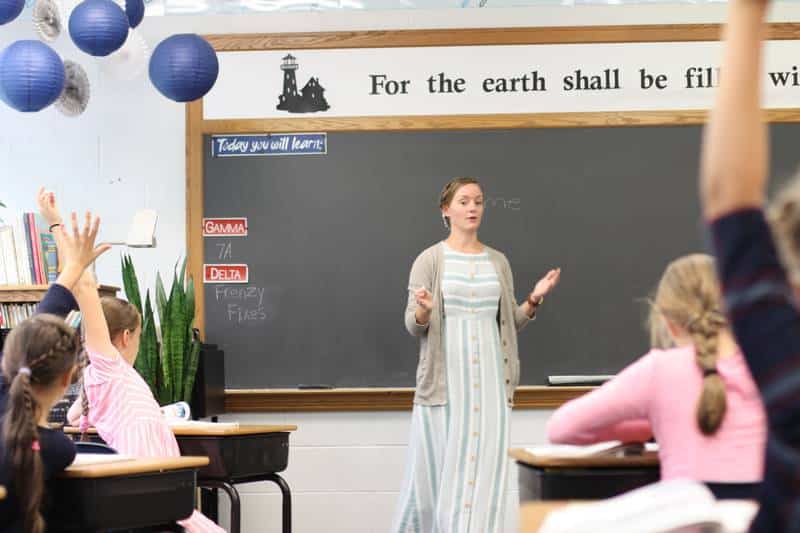About Those Raised Hands
★★★★★

I have to wonder at what point in history the raising of hands for permission to speak became such a ubiquitous part of the classroom. It’s really a bit odd when you think of it, yet it is a helpful signal that can serve us well if we use it wisely.
Certainly, the practice of speaking in turn is a vital skill for students to learn. In conversation with some teacher friends, we have wryly concluded that if by some magic students would always speak up when we want them to, and if they would never talk or whisper without permission, the single most frustrating aspect of school teaching would be eliminated. If such magic exists, I have yet to discover it. Instead, I walk the daily delicate balance of trying to maintain order while making my classroom a safe place for students to converse and to share their thoughts.
While the raising of hands can be a useful signal, it is important to remember that raised hands should never control the classroom. First, we should never feel obligated to answer all the hands that are raised. Students should know that raising their hands is not an automatic ticket to get to talk at that particular moment. While I don’t want to shut down the enthusiasm of youngsters eager to share their thoughts, sometimes it is necessary to say, “Ok everyone, put your hands down. For now, you need to listen instead of talk.”
My students use different hand signals if they need a tissue, need to sharpen a pencil, etc., so I don’t need to be afraid of ignoring needs by not answering every raised hand. It still takes good discernment to know when to call or not to call on some of those persistent hand raisers. At times when I have found myself falling into the ditch of answering unnecessary hands that take a lesson off track, I have often recognized that it is because of laziness or lack of preparation on my part.
The flip side of this is that it is also important to call on students who are not raising their hands. In his excellent book, Teach Like a Champion, Doug Lemov calls this practice “Cold Call.” Out of the forty-nine practical teaching techniques described in his book, Lemov says “Cold Call” is the “single most powerful technique” that fosters high classroom achievement. If students know that they may be called on at any point in a lesson, it will keep them on their toes. The goal of this should never be to put students on the spot or to embarrass them when they weren’t paying attention. Instead, the goal is to drive classroom engagement and to give every student the chance to share their thoughts, even the shy students who are reluctant to raise their hands.
I have found “Cold Call” to be remarkably effective in my own classroom. I tell my students plainly, “I might call on you whether or not you are raising your hand. It’s ok if you’re not sure about the answer. You can give it a try, and if you get it wrong, you can learn from your mistake.” Consider the difference between these two approaches to a very simple question in math class:
- I ask, “What is the eighth month of the year?” Five hands go up. I call on someone who is raising their hand, and they give the answer.
- I say, “What is the eighth month of the year? Use our Months of the Year chart to figure it out if you don’t know by memory, and soon I’m going to call on someone to give us the answer.”
In the first approach, maybe half the class is engaging with the question. Using the second approach, suddenly everyone is engaged, because they know that they might be called on to give the answer. “Cold Call” keeps students accountable and encourages everyone to interact with every question.
Managing the raising of hands (or not raising hands) demands constant wisdom and attentiveness for us as teachers, and it is an important part of everyday life in the classroom. It is our responsibility to guide classroom discussions in a way that will maximize engagement and learning for our students.
Leave a Reply